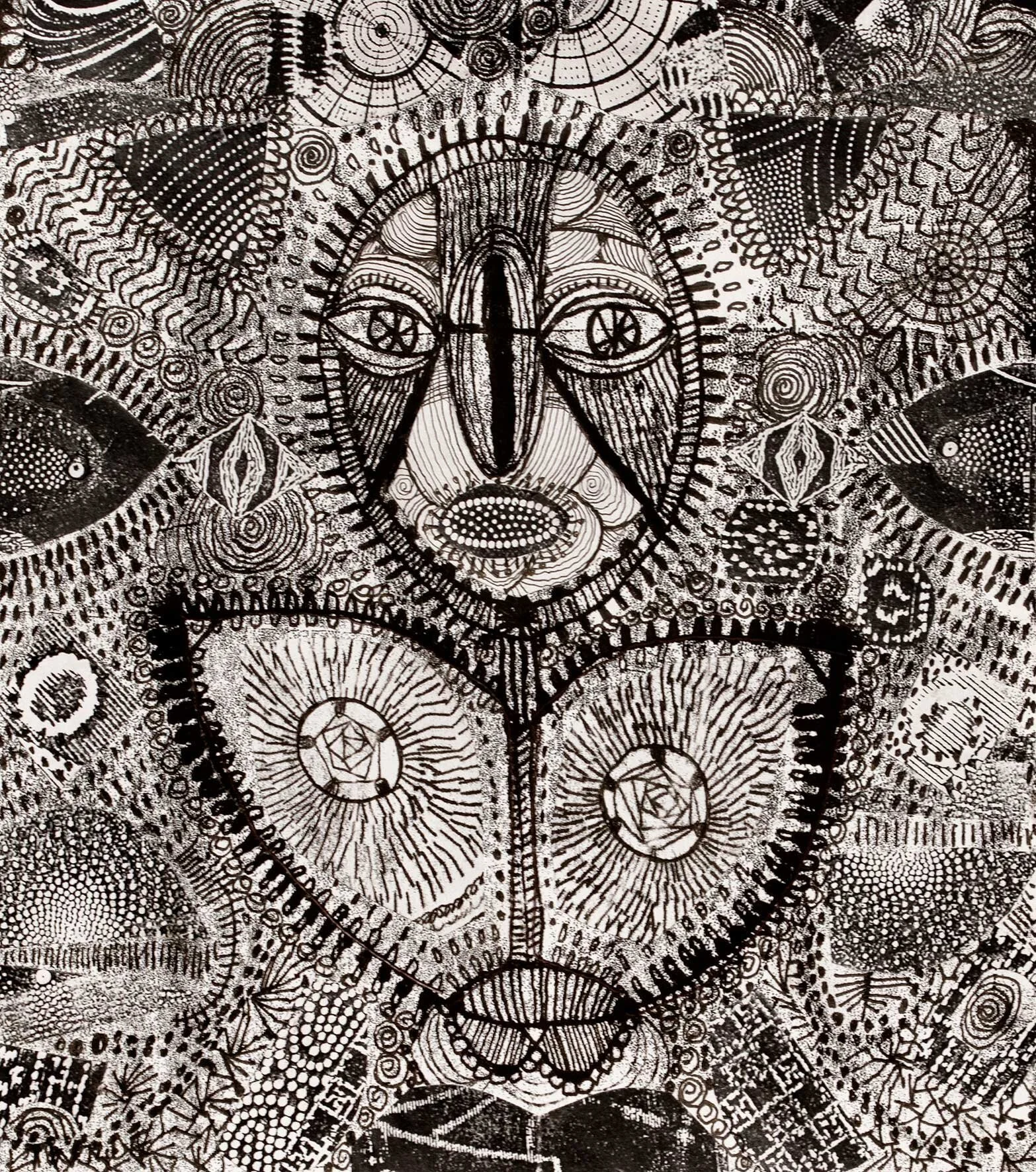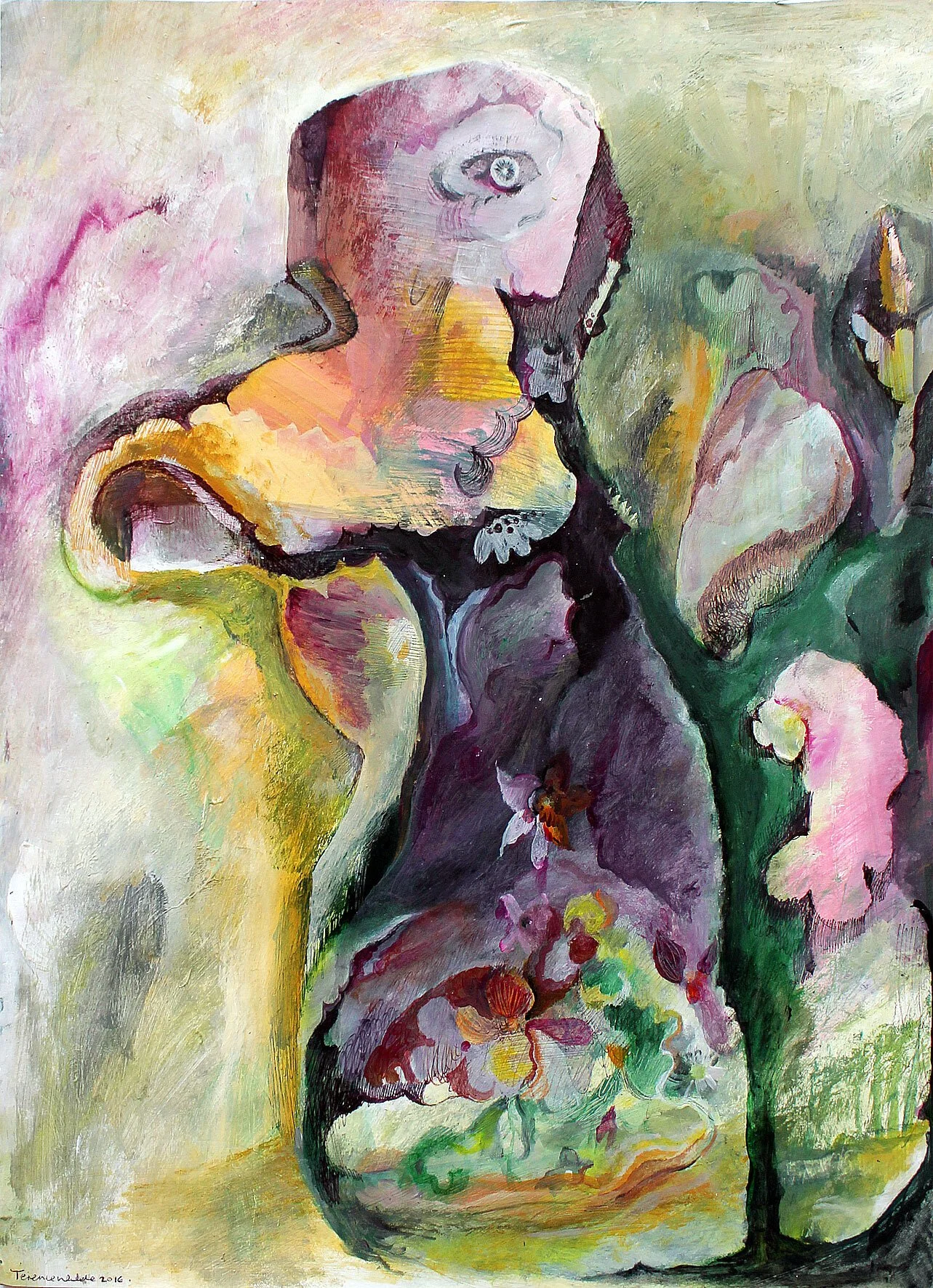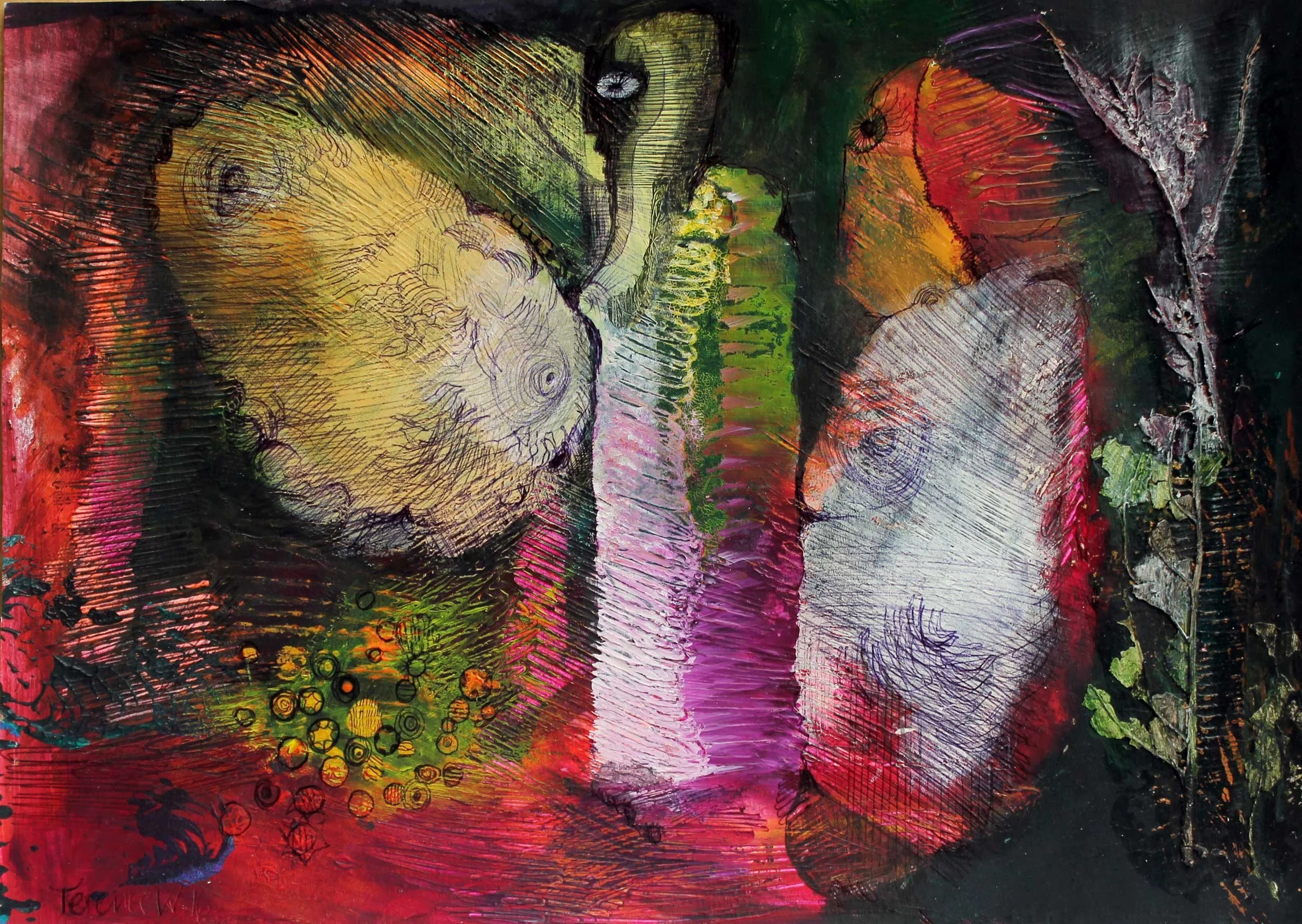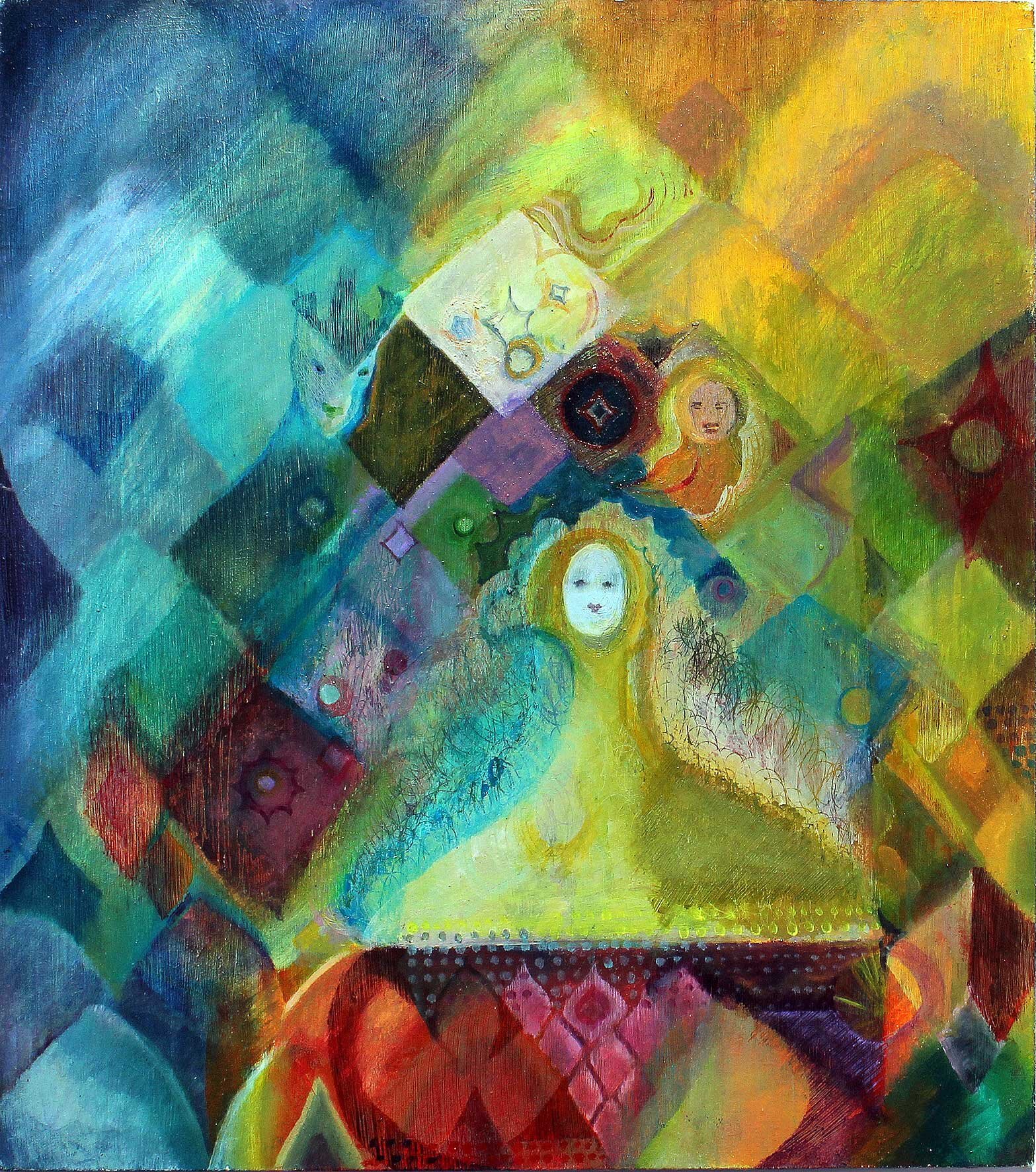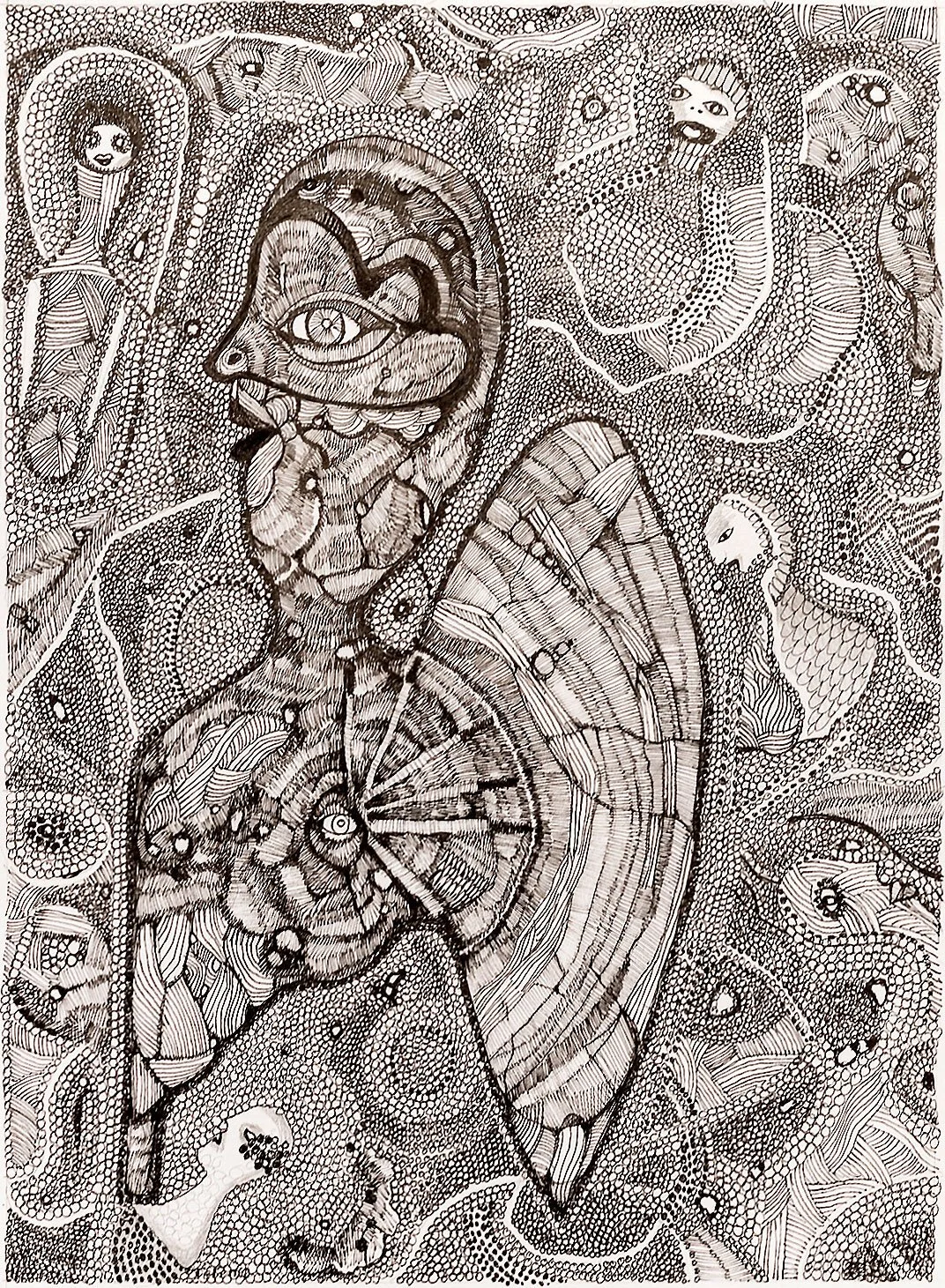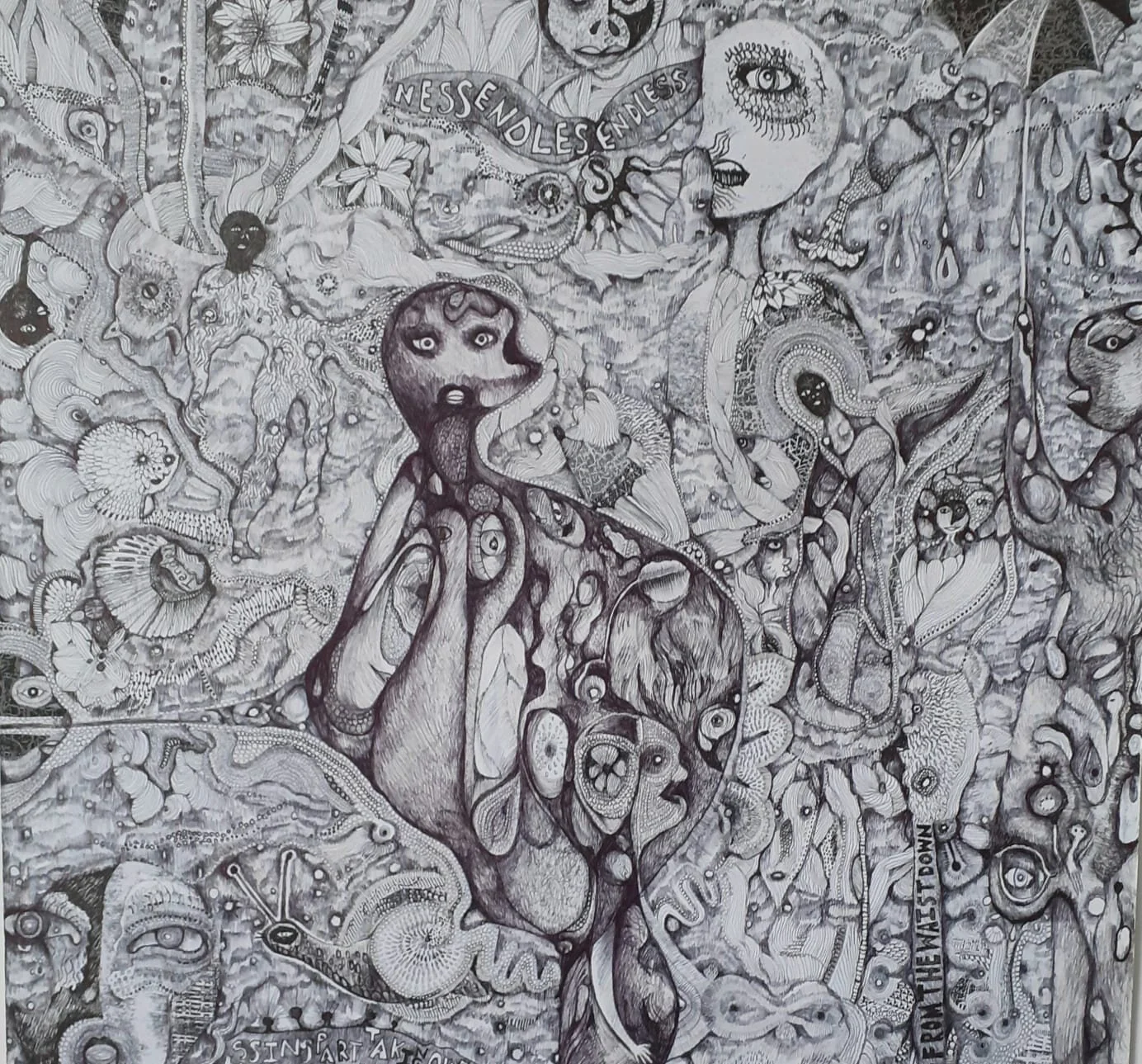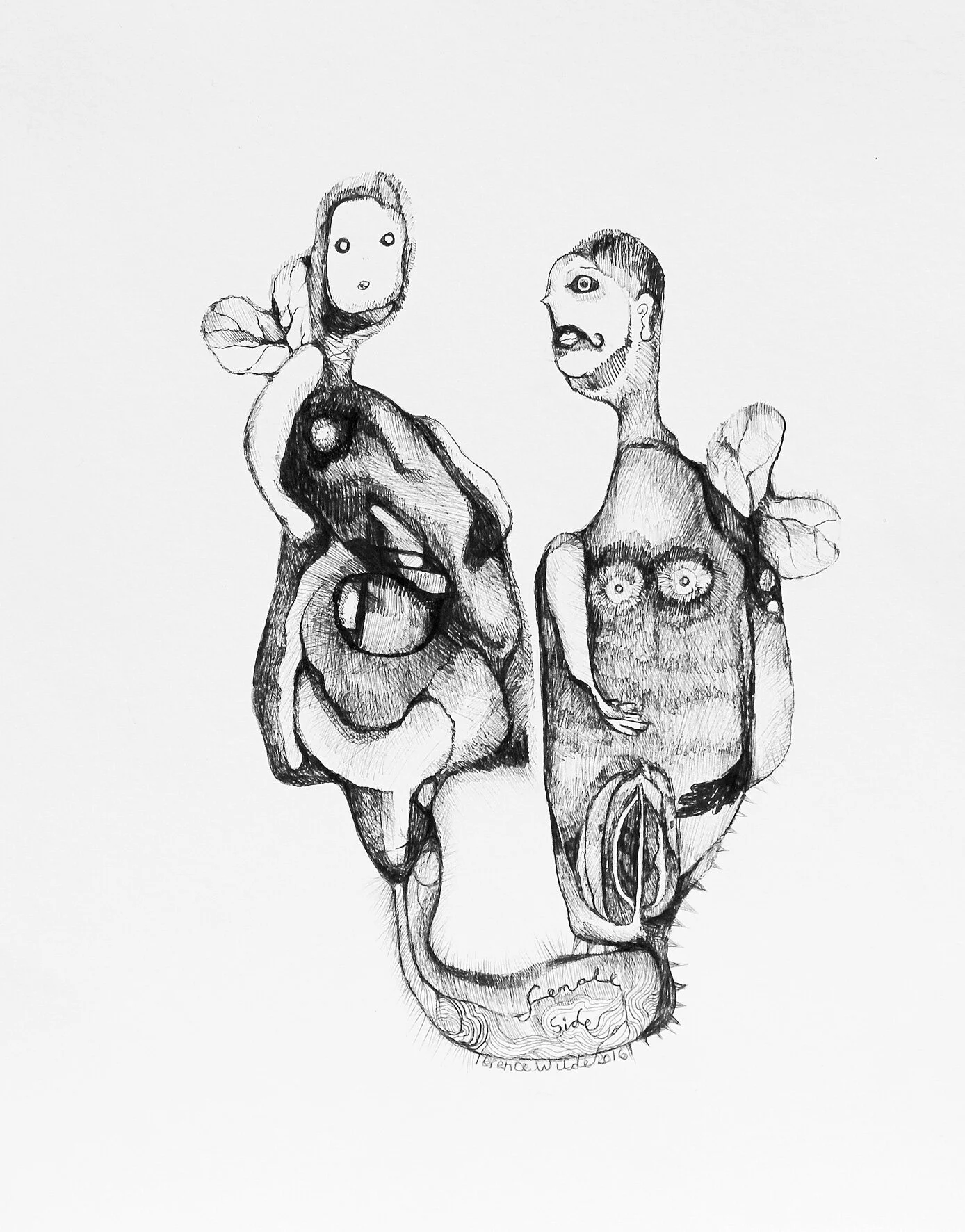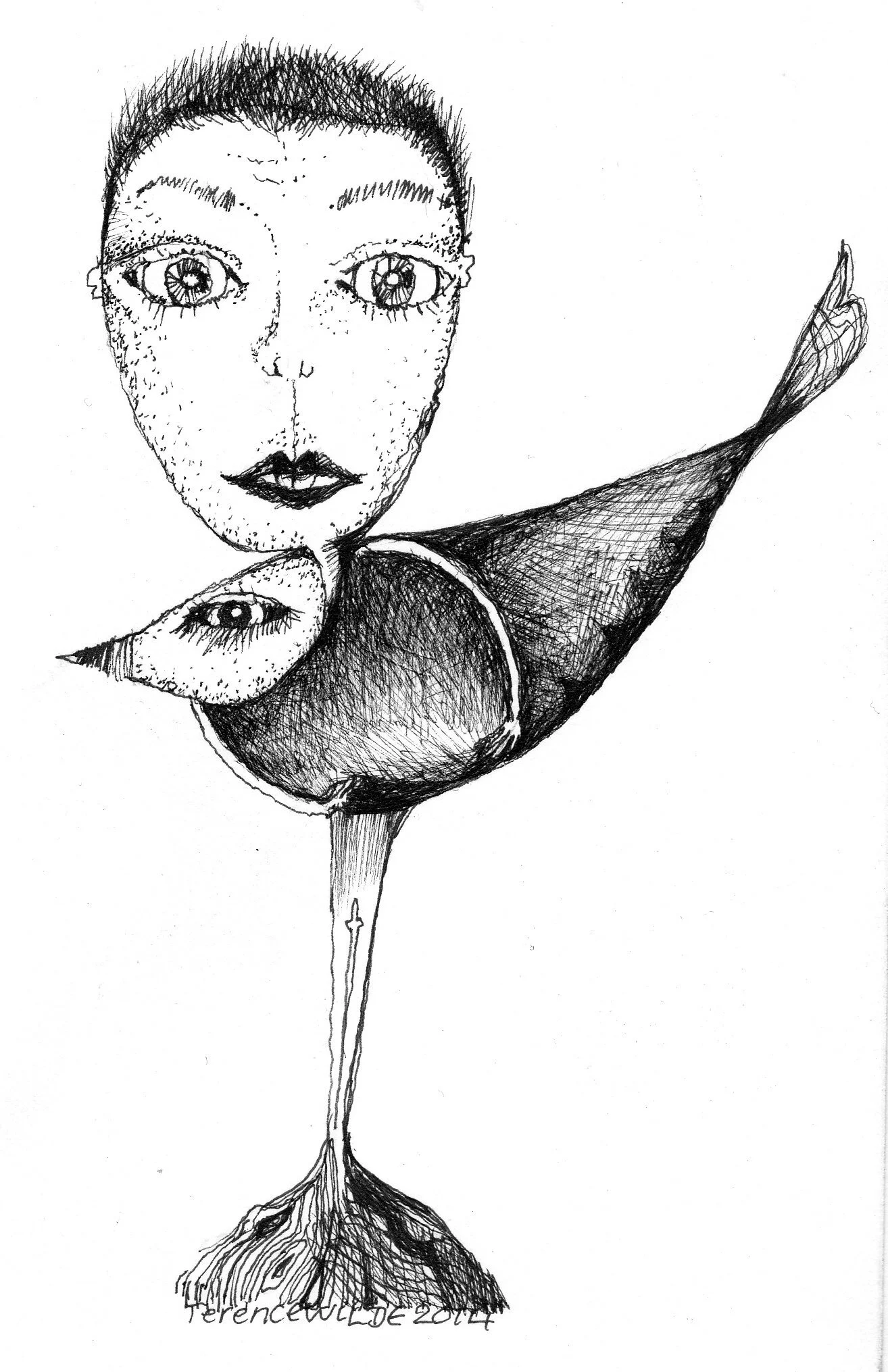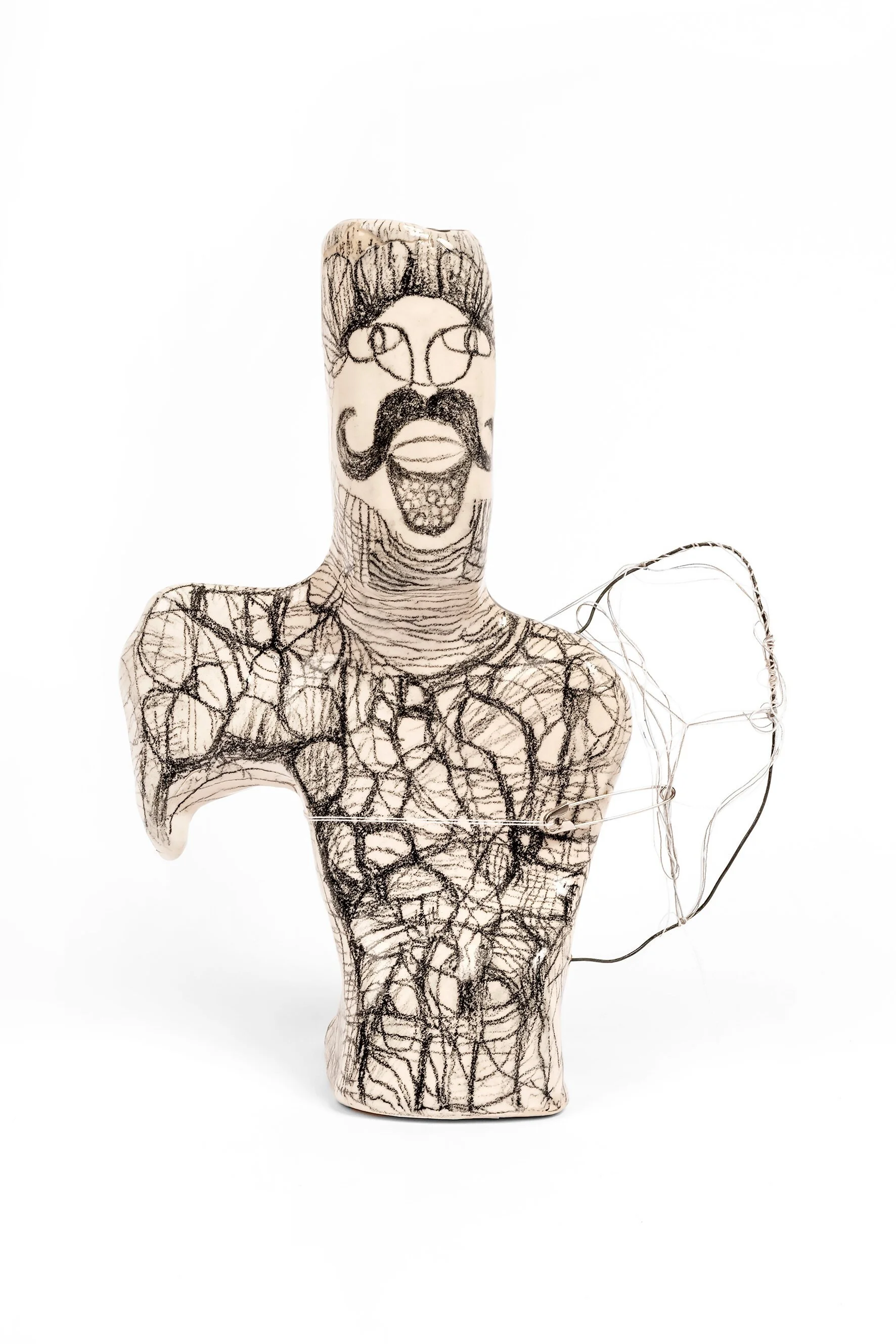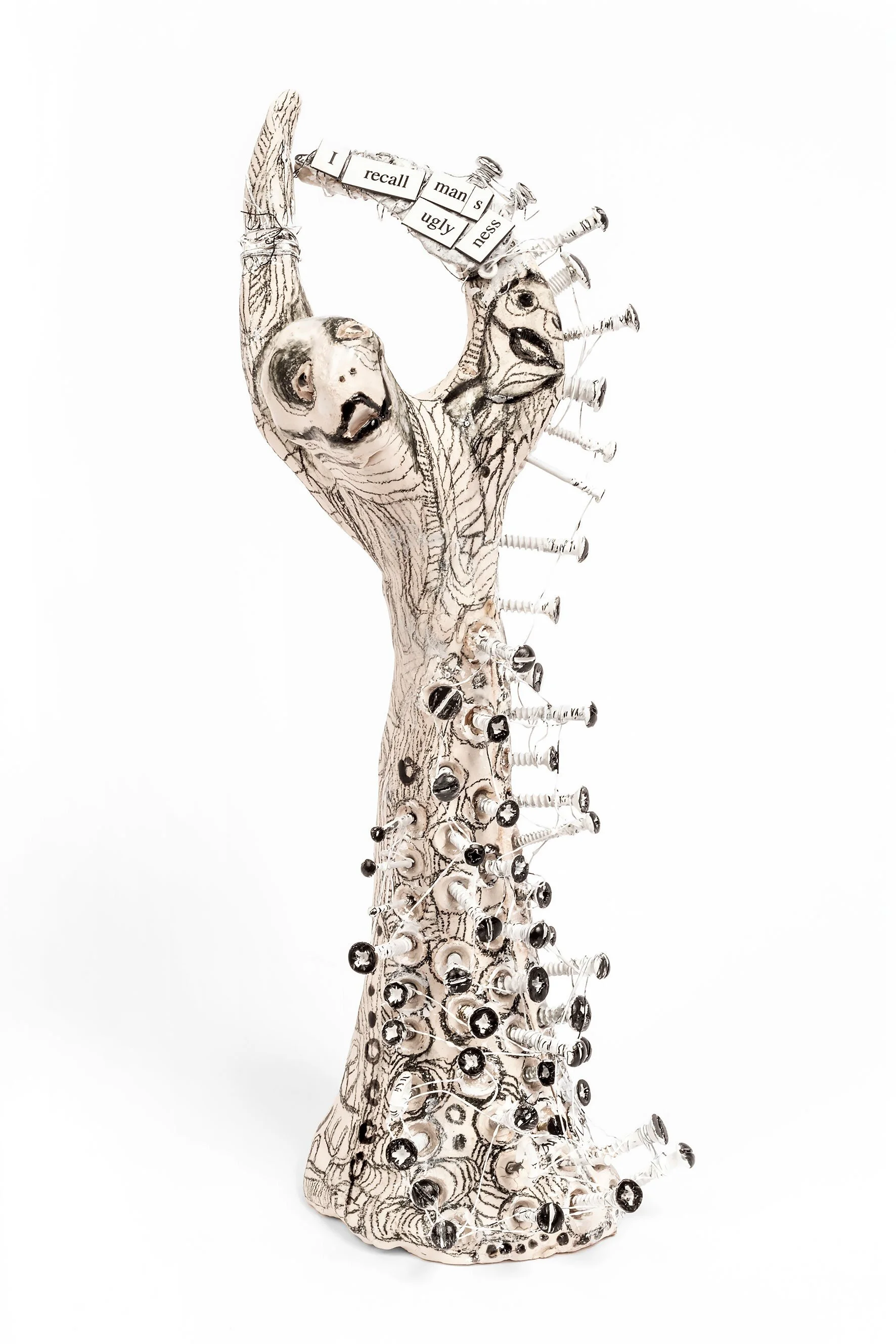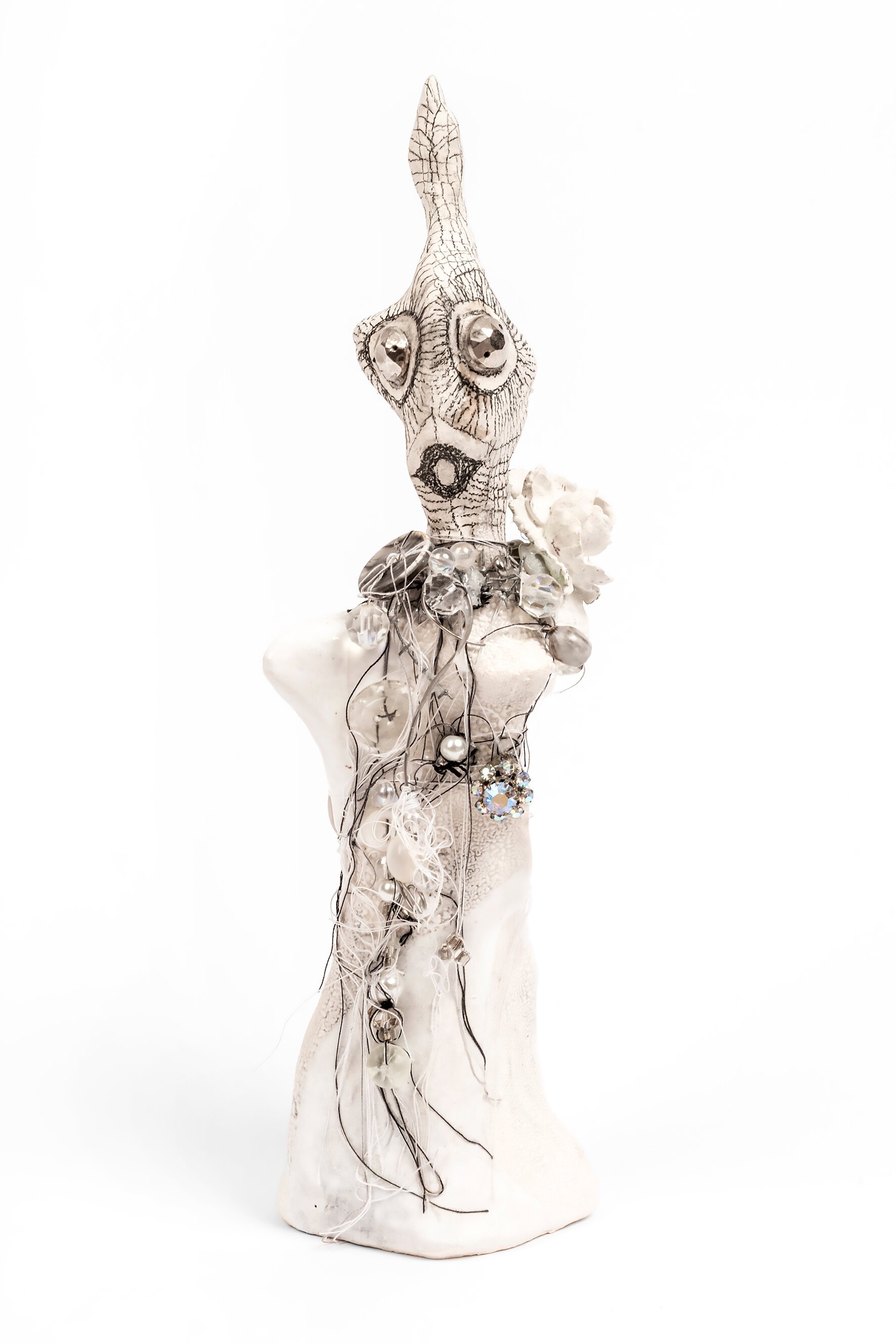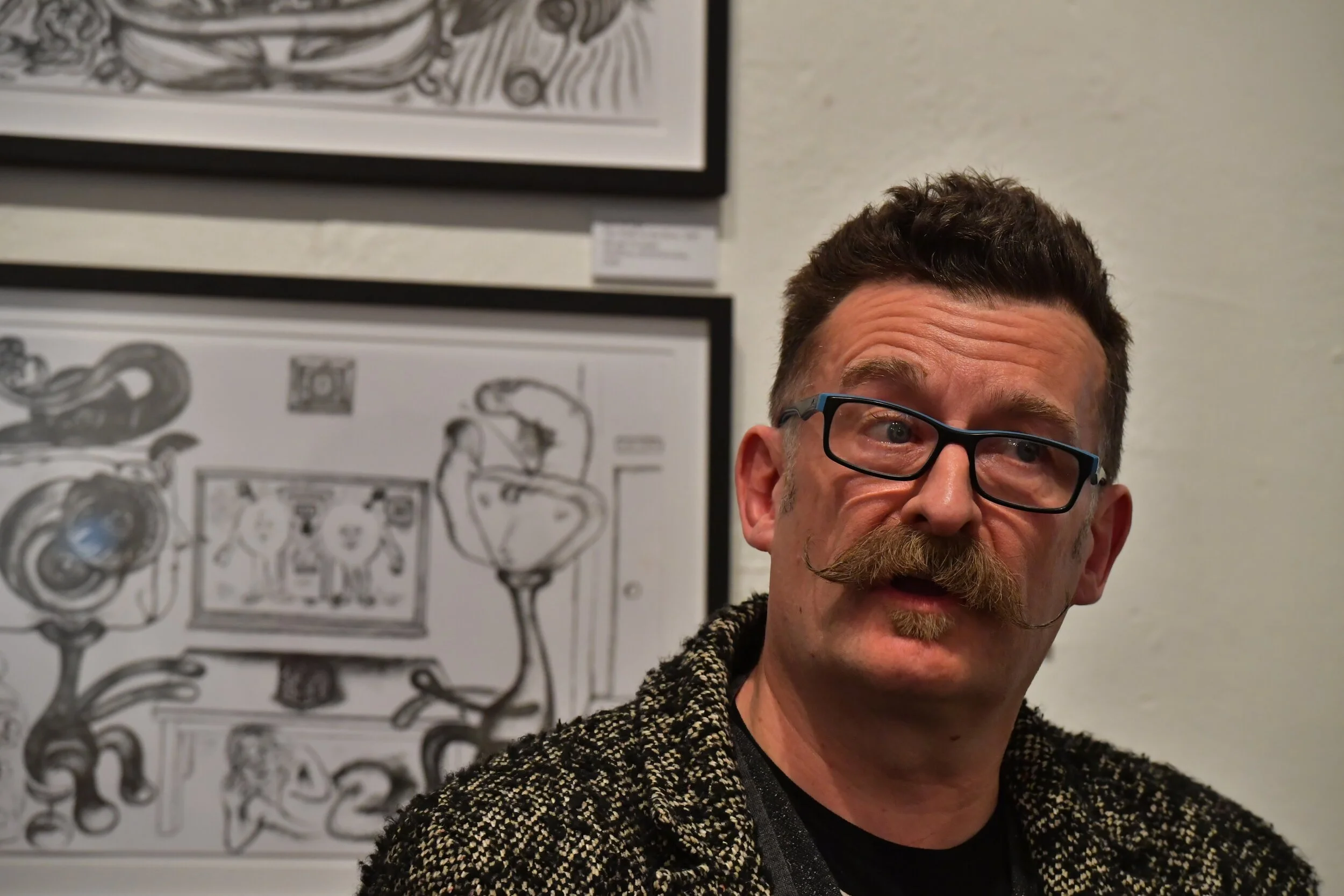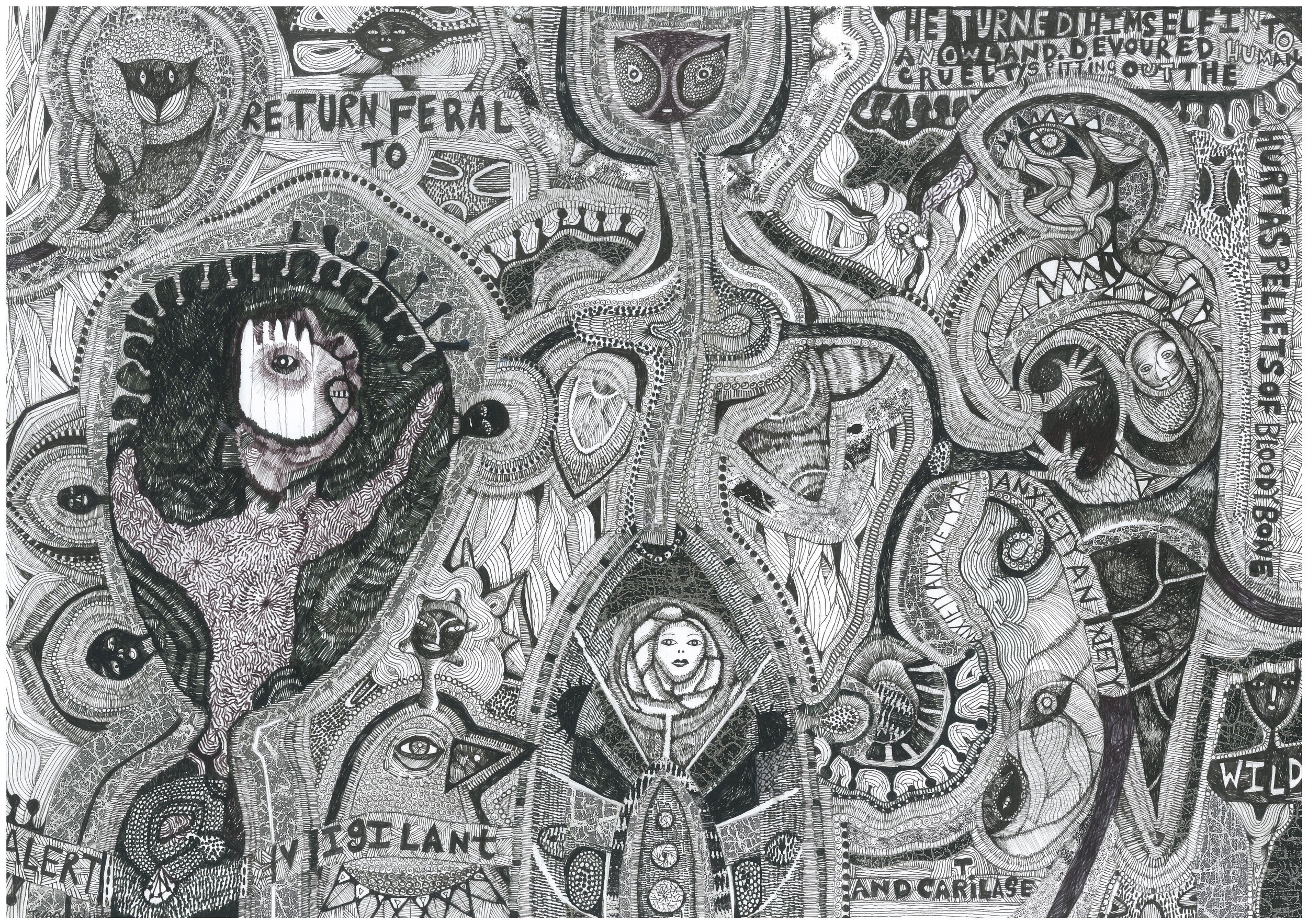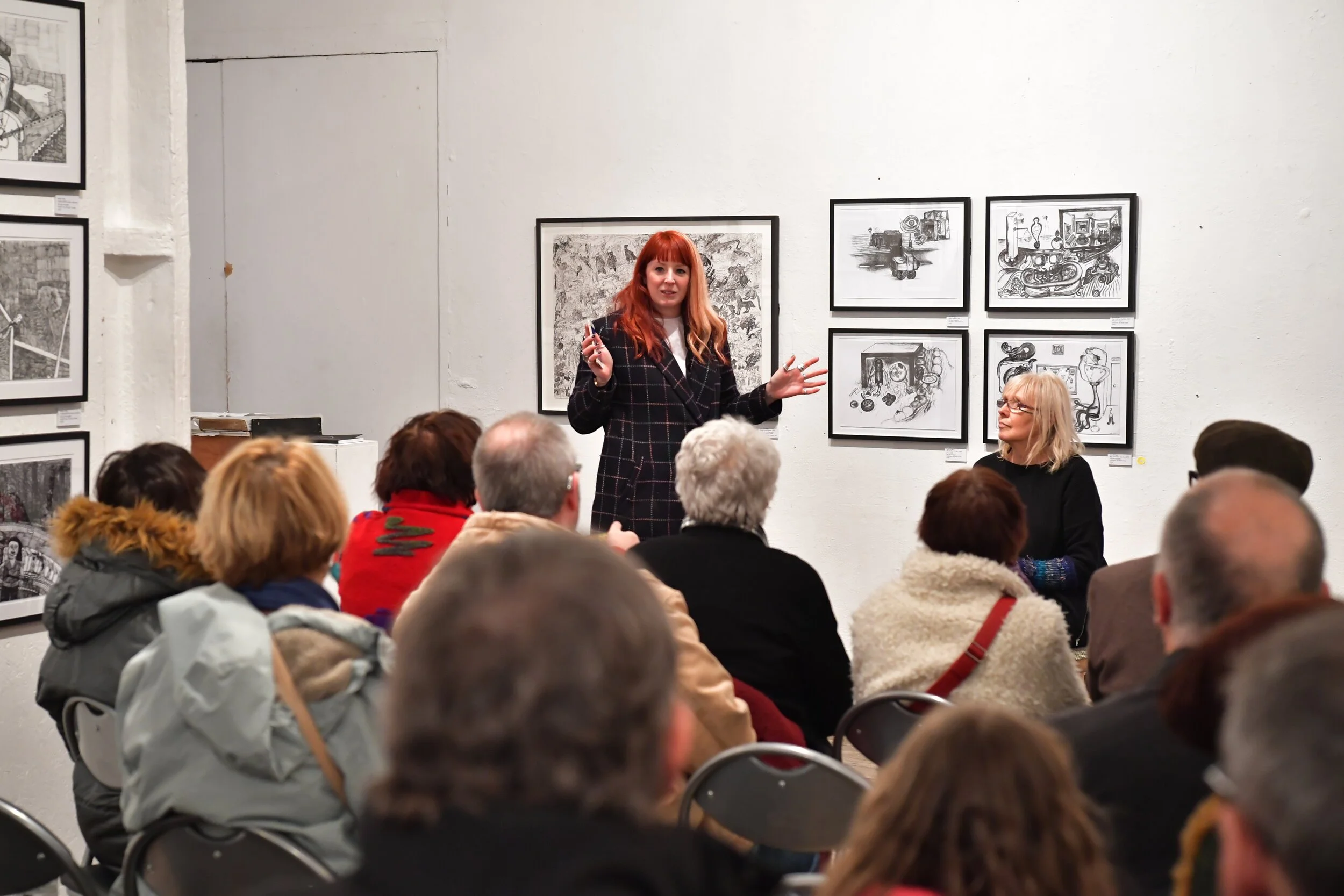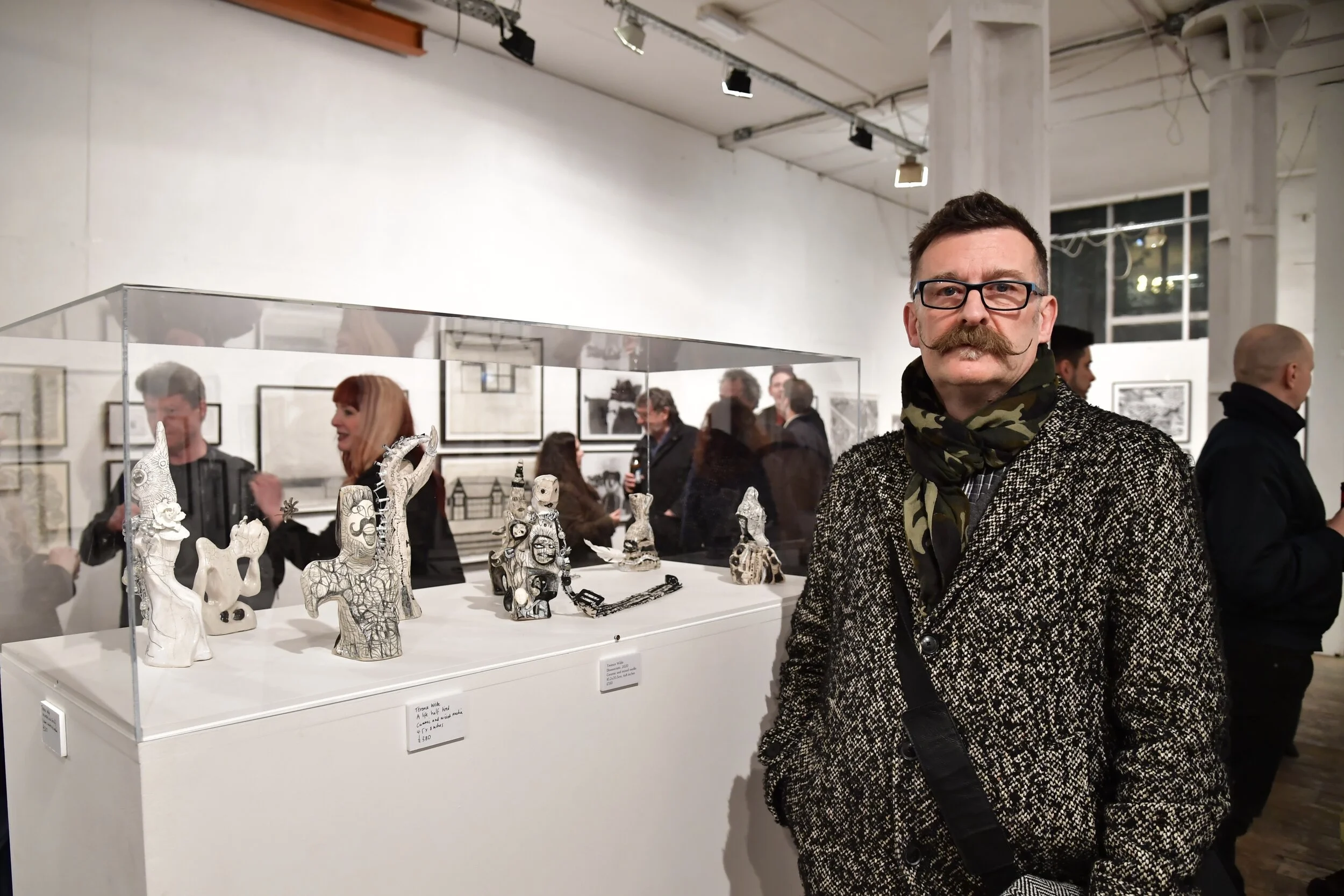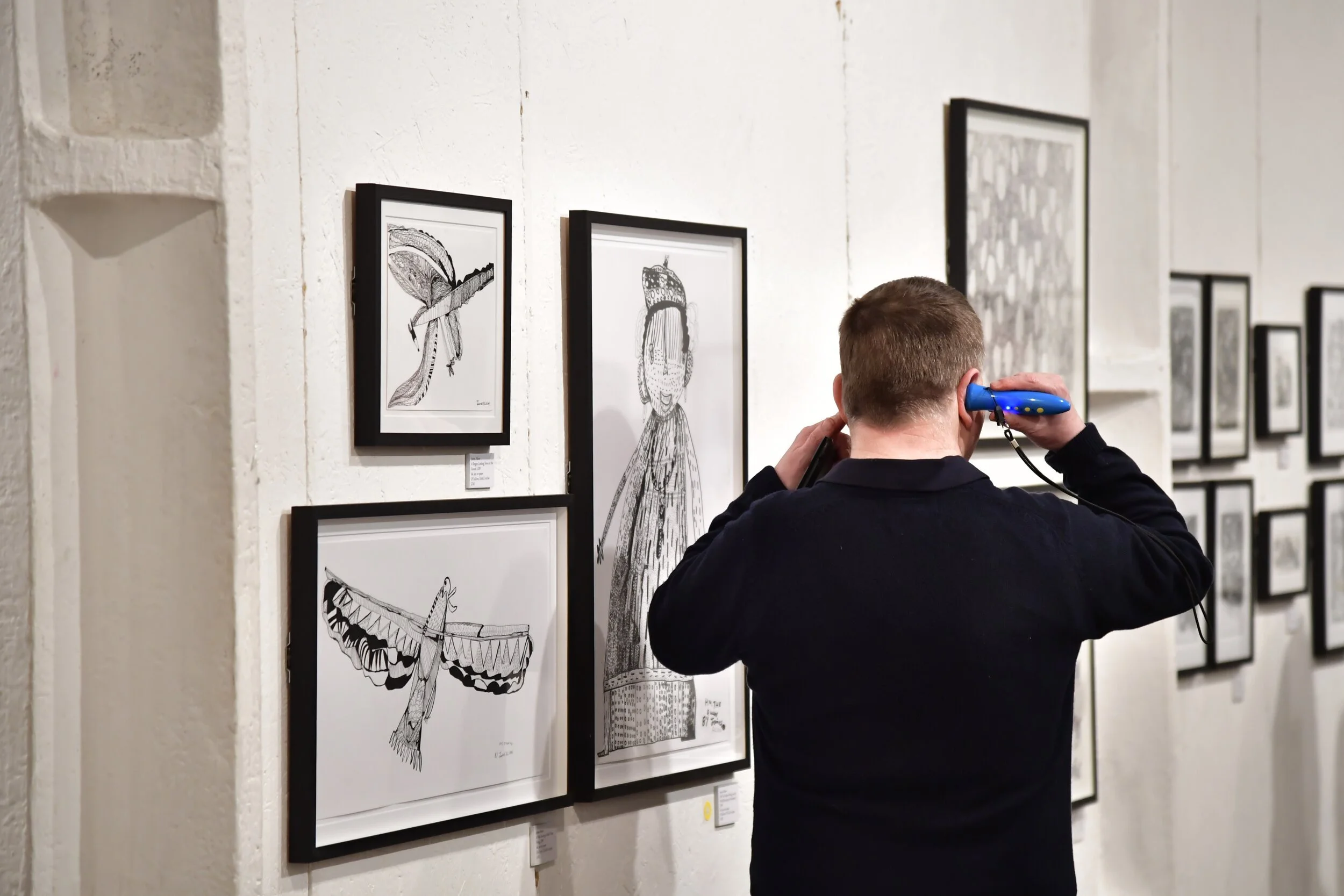Terence Wilde
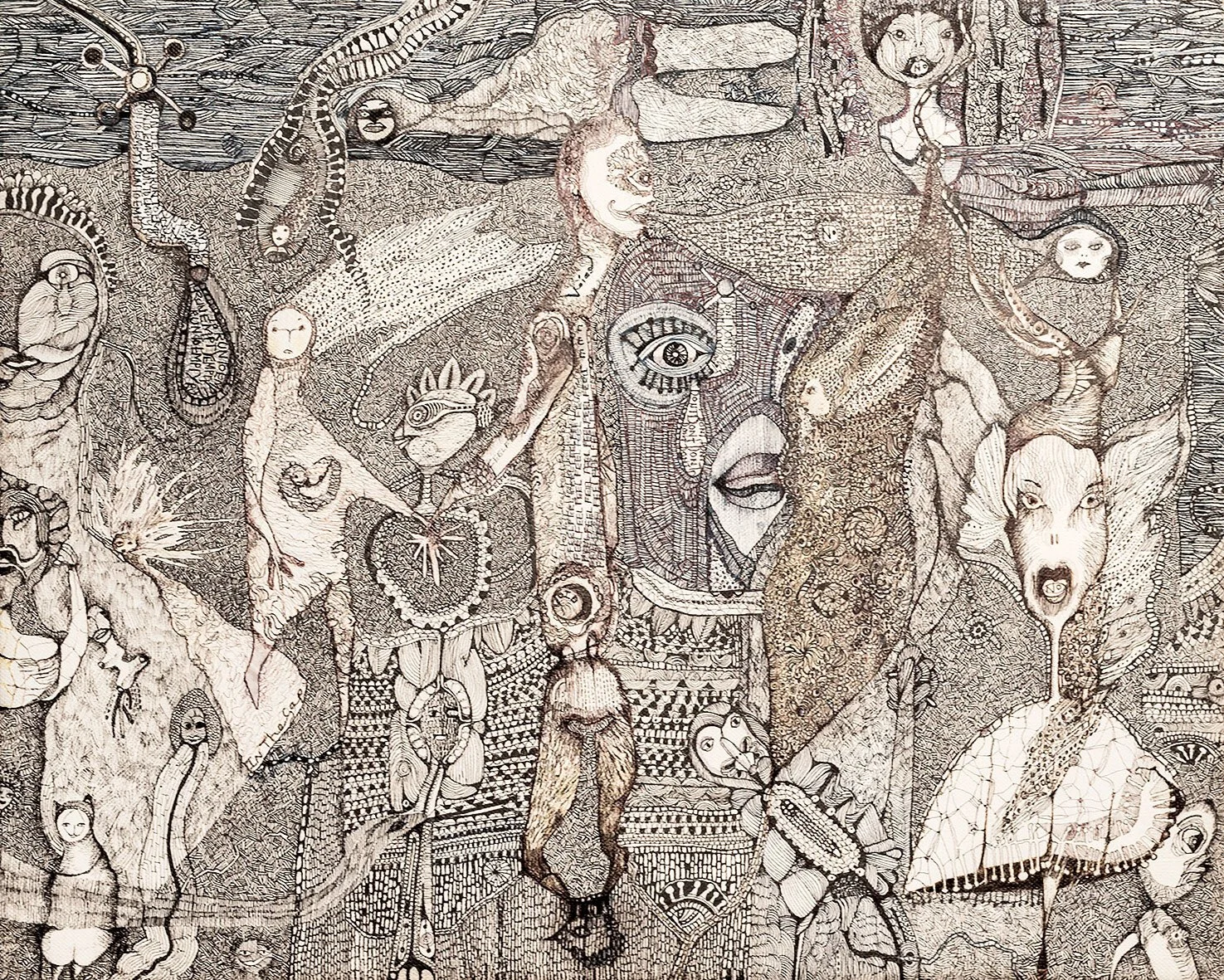
The title of this show is quite ambiguous and that is exactly what the artist Terence Wilde wanted. For Terence, it references a multitude of thoughts and feelings: unfortunately, due to the high quality and number of entries this year we are unable to include your work in the show; unfortunately, you need to go back to shielding as a vulnerable person due to covid-19; if I’d have had a fortunate childhood, maybe I wouldn’t be doing art and I certainly wouldn’t be the person I have become today.
Join me on a journey as we explore the two worlds of artist and adult survivor Terence Wilde, who uses his art practice as his own form of therapy. For him, it is a distraction, a method of calming and a daily occurrence that keeps him grounded. His creativity runs parallel to his mental health. Terence describes his black and white work as his private, authentic work and his colour work is what tends to sell more. Do pay attention to the titles, as they have as much resonance for him as the artworks themselves.
Terence describes his colourful work as blissful, happy and ethereal – where he retreats to places to protect himself or where he has been in a positive mindset. But his black and white work is very honest – nothing is hidden and his demons often help to form the image, detail and text. The events in Terence’s life have molded him, so it is important for him to put authentic narratives and experiences into his work – be they negative or positive. The creative act helps Terence to formulate his thoughts, with him stating, “If me sharing my story about child abuse helps younger children, then I owe it to myself and them to share it and share how I’m overcoming it.”
Terence recently said, “Through my art I lose myself and in the process, discover who I am. Art is a healing tool that helps me to survive as a person.”
Introduction

“I was encouraged by my favourite teacher from school to work in colour and “just be myself”. Doing this through textiles and pattern making was the easiest part, as I’ve always seen colour as an emotional barometer - something that changes with my mood and brings unlimited comfort and joy to both the viewer and myself. Colour has also helped me survive financially as a designer in the early days and it is my constant first love. My relationship with colour is instinctive: when I feel like celebrating, I make colourful work, which feels like letting light into the world like stained glass windows.”
Harry Baxter, an Artist Educator and Audio Describer, describes a couple of artworks from the show. Click below for an audio description of this image titled 'Love and Fear at the Shrine of Mother', 2020.
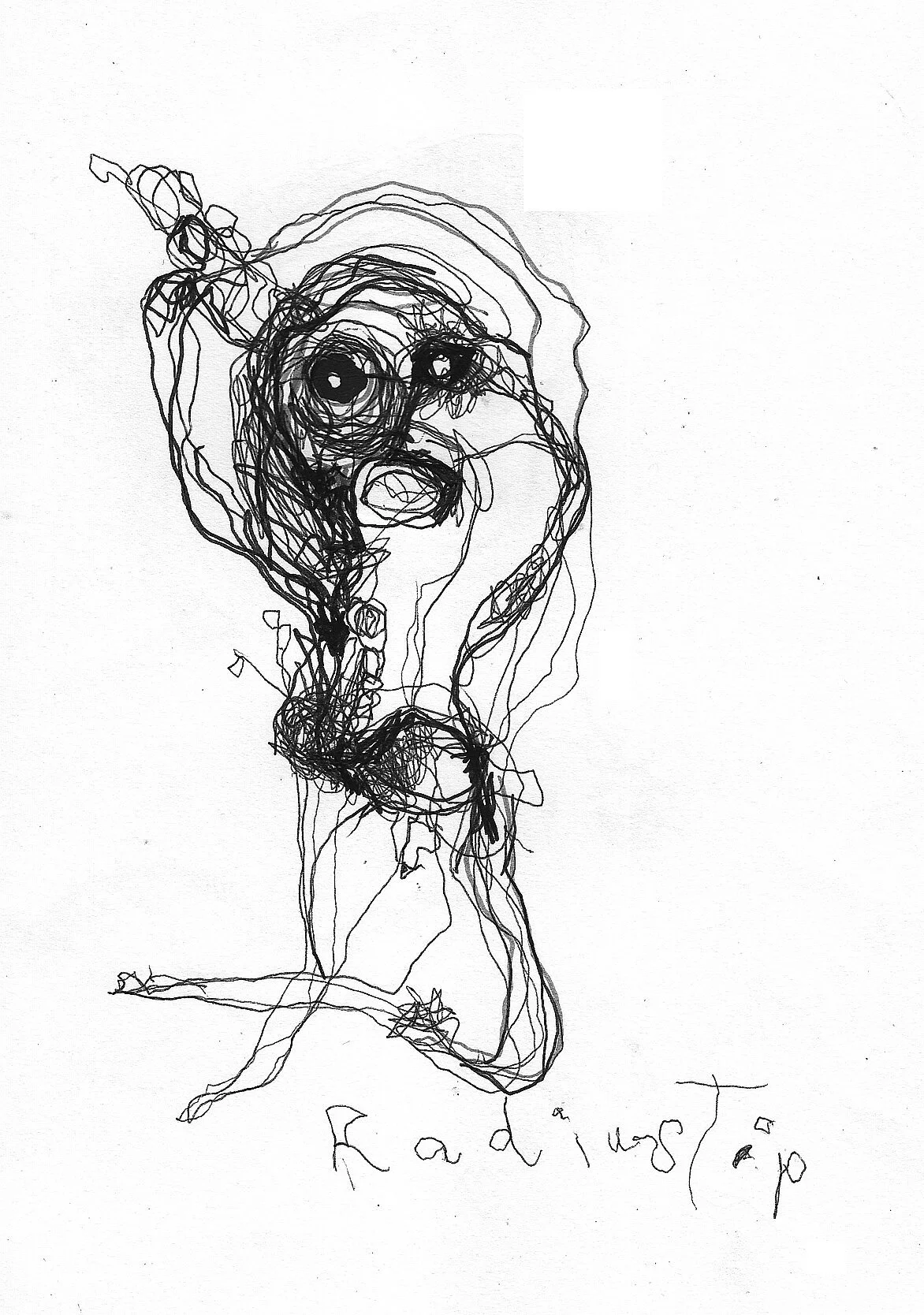
“During stressful times I turn to solitude for comfort and use art to express myself, which I do so predominantly in black and white. Part of this process involves working on canvases or ceramics, using a variety of pens, to give an organic rawness and a sense of naivety to the work. I consider the black and white work to be the foundation of my practice - a reflection of my life - in particular, dealing with some unfortunate childhood events. I infuse my art with the voices and poetry of a litany of beloved female muses. Their inspiration is a major spark for me creativity, as it has given me something substantial to embrace and relate to, when I haven’t been able to get my real needs met by people I know. Monochrome art has helped me to channel pain and poison into wisdom, beauty and freedom.”
Harry Baxter, an Artist Educator and Audio Describer, describes a couple of artworks from the show. Click below for an audio description of this image titled 'Return to Feral', 2020.

“I’ve had minimum training in ceramics, so when I was asked to co-facilitate OT (occupational therapy) pottery groups, it put me in a similar position as the patients I was helping. I learnt on the job from patients and other pottery teachers. This way of working has been a departure for me, in my approach to ways of doing things, alongside developing a relationship with clay. I find clay to be malleable, tactile and ancient - something from earth, which holds its own memories as well as absorbing yours. Clay can hold changes of mind and be remolded into forms not originally intended. Mistakes can be changed into future successful pieces. I started making maquettes, which later became representations of my emotions in a tangible way - I now describe these as embodiments. Making these is a great way for me to experiment and leave myself open to the process… just like the spontaneity of a child playing creatively in the moment.”
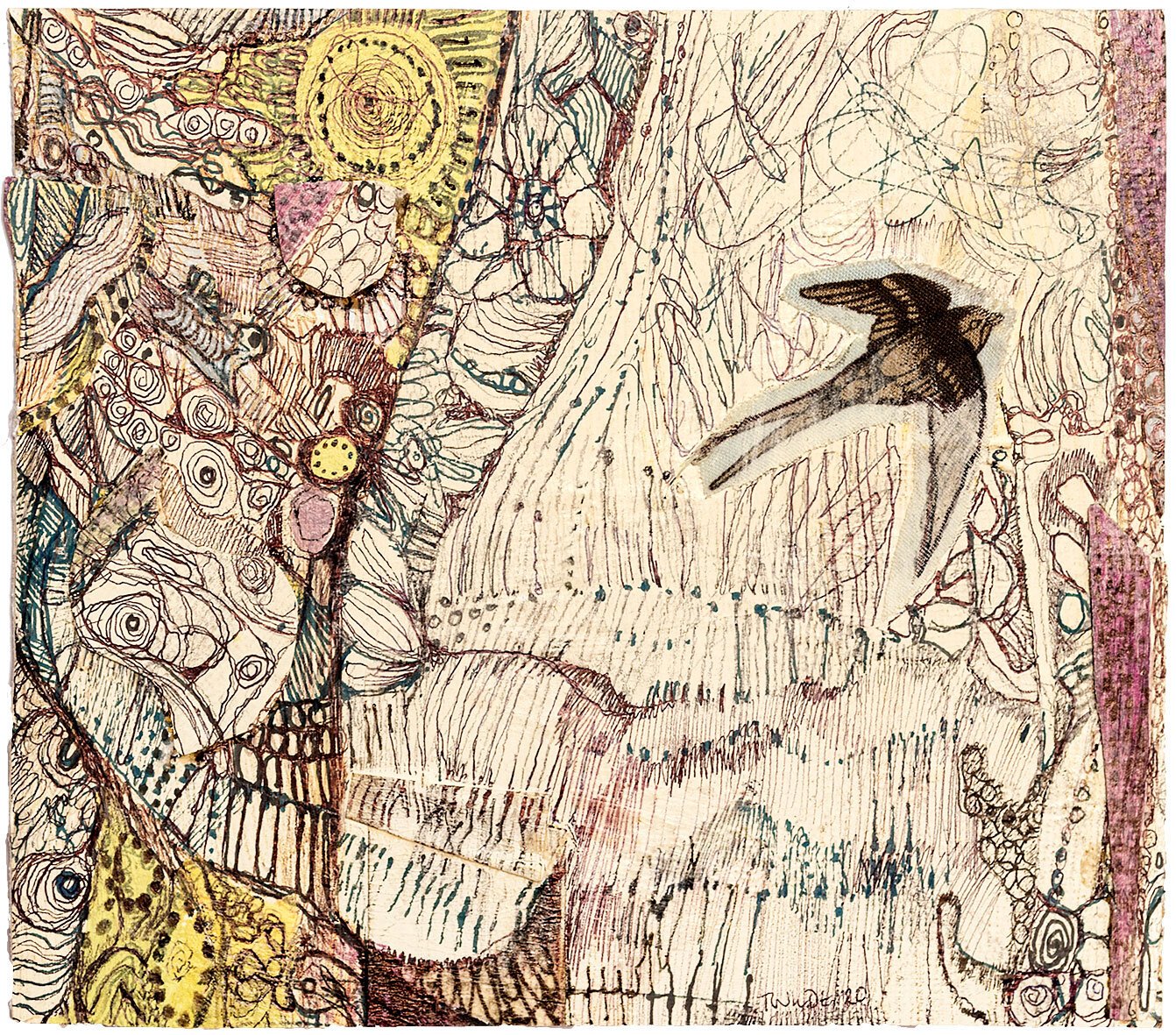
EVENTS AND RELATED CONTENT

